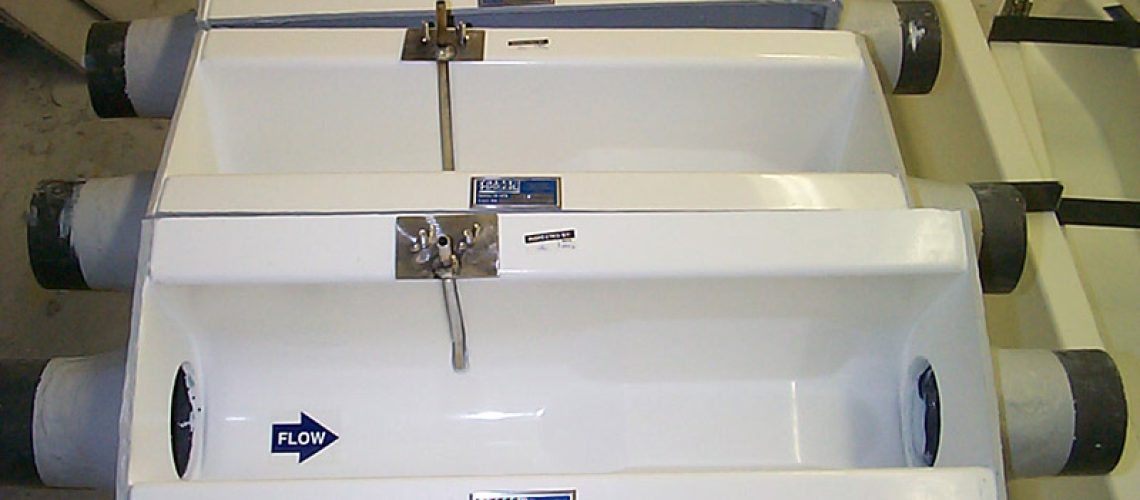When you’re looking to implement a flume in your flow channel, you’ll have quite a few options to choose from. The sheer number of types can be a bit overwhelming to those who aren’t familiar with each of their offerings, but the key differences are easy enough to remember. Take a look at the various styles and designs, and discover what you need to know when it comes to selecting the right flume type.
Parshall
The Parshall flume is the most commonly used flume, and that’s no accident. It has more than a century of research history, and it works in a variety of different applications. Several variants are also available, so it’s fairly easy to customize it for your unique flow channel conditions. Whether your flow spills off the end or rejoins an inline channel, a Parshall flume can still offer accurate measurements. They come in an hourglass shape, and their equations come preprogrammed into the majority of flow meters. If you can use a Parshall flume with your flow, you probably should just for convenience’s sake.
Montana
The Montana flume is similar to the Parshall, but it’s missing the throat and discharge sections. While that makes it smaller and easier to install, it does come with some additional requirements. While the Parshall had numerous applications, the Montana only works when the flow channel can facilitate free-spilling discharge. Keep in mind that some Montana flumes will include the throat section, but that’s not necessarily the case. They’re all missing the discharge section.
Palmer-Bowlus
With the Palmer-Bowlus flume, you’ll have a flume with a notably long throat that excels at measuring flow rate within piped systems. It can offer accurate measurements under quite a few conditions including those that don’t have a drop in the conduit invert. Just remember that the design for this flume style isn’t standardized, so the flow table you use can vary depending on the manufacturer. Additionally, this flume style has extensive upstream requirements measuring about 25 pipe diameters, so make sure your upstream conditions are suitable before deciding on the Palmer-Bowlus.
Trapezoidal
A Trapezoidal flume is primarily used to measure flow within irrigation systems. It can pass solids quite easily, so they’re not a problem like they are in Palmer-Bowlus flumes. Its range is quite extensive, and it still offers reliable accuracy in measuring varied flow rates. You can install it in flat grades as well thanks to its high submergence transition capabilities. Just keep in mind that any add-ons like stilling wells along with staff gauges will have special considerations since a Trapezoidal flume doesn’t have vertical walls.
Flumes from Tracom
When it comes to selecting the right flume type, nothing helps quite like a team of experts can, and that’s exactly what you’ll find at Tracom. When you work with our team, we can come up with a solution to your unique flow channel conditions, even if that means designing and building a custom flume structure. Contact our team today to learn more about everything we can offer!



